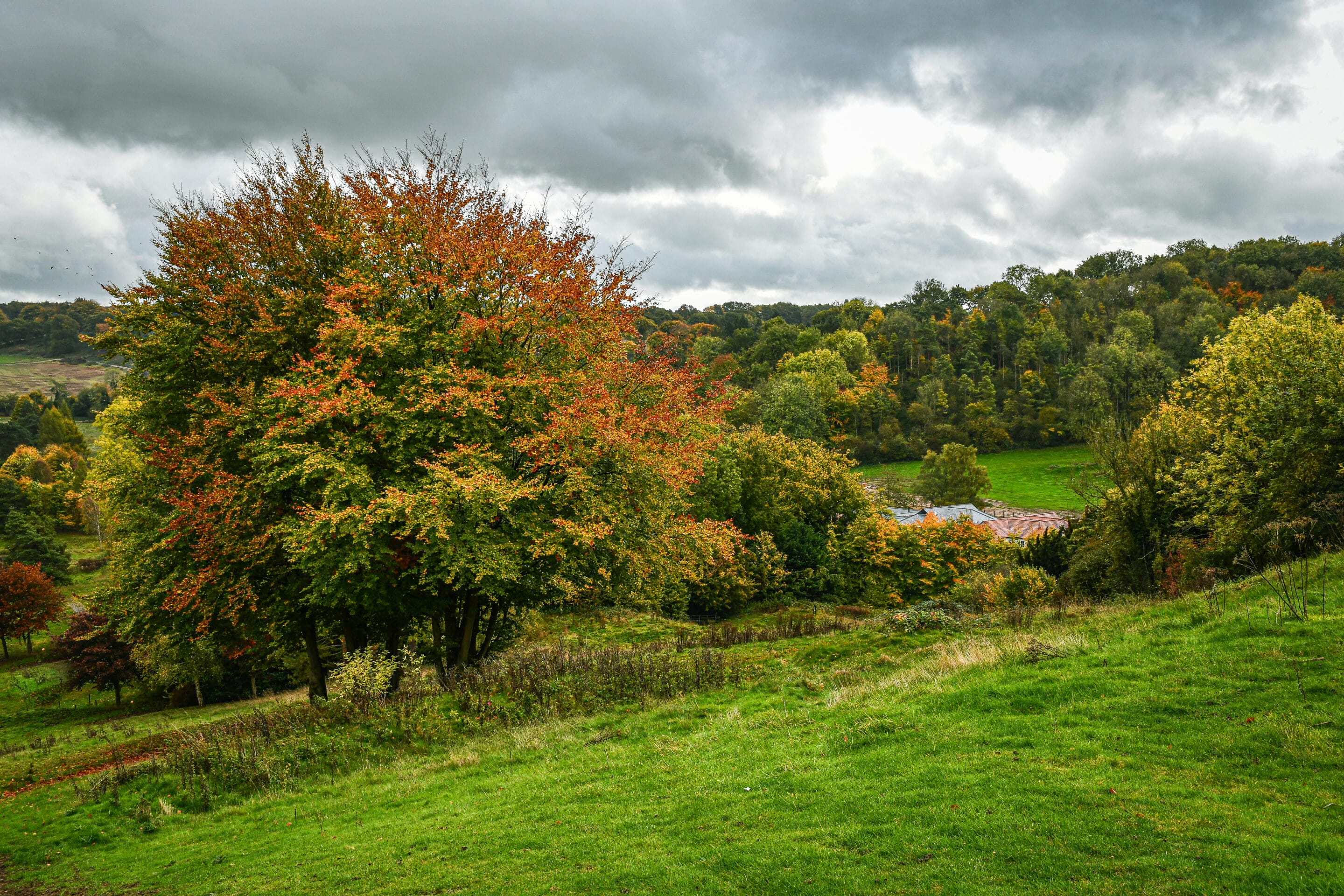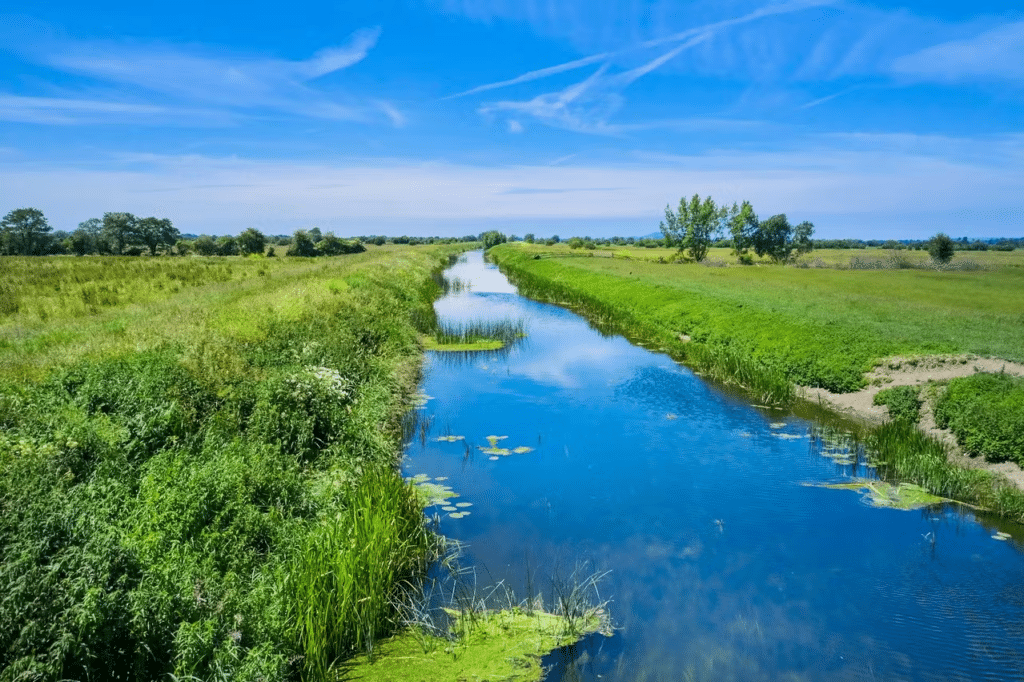Summary
Kent Wildlife Trust and its partners have developed the Wilder Carbon Standard for Nature and Climate (‘Wilder Carbon’) that supports native habitat restoration in the UK to target both carbon and biodiversity benefits. In April 2023, It completed its first sale of premium ‘conservation-grade’ carbon Credits from an abandoned golf course named Heather Corrie Vale, validated by the Soil Association Certification. Wilder Carbon has a developing pipeline of further projects that aims to deliver up to a megaton of carbon by 2030, for example Honeygar Farm.
Acknowledgements
With many thanks for their time and insight on this case study:
Sarah Brownlie, Project Manager, Wilder Carbon
Gillon Dobie, Impact Director, GrowUp Farms
Becky Hawes, Communications Manager, GrowUp Farms
Date published: 22/02/2024
Lessons Learned
For other project developers, the Wilder Carbon team offer the below lessons learned from its buyer engagement:
- Terms and conditions – know the terms by which you will sell the benefits of your project, and stick by them.
- Set out to sell your project, not the credits – Talk about your project and what makes it unique. UK buyers that are in a position to purchase carbon credits are now looking for quality and tangibility in projects. Treat it as a partnership not a transaction. It will take time.
- Buyer identification and promotion – It may be easy to get disheartened with the volume of conversations it may take to identify your ‘buyers’, but for many projects it will be a numbers game, and the right conversation with the right person can make all the difference. Keep going!
- Promotion of Milestones – Celebrating even the seemingly small things is important, and can signal to buyers the important progress of your projects.
- Legal and procurement hurdles – these can take several months, so be prepared and patient and understand your buyer’s processes early on.
Setting Buyer Standards
From the beginning of the Standard’s development, the Wilder Carbon team committed to setting ‘Approved Buyer Standards’ that screened potential buyers with sustainability requirements. Its aim with these Standards is to prevent greenwashing and ensure that any Wilder Carbon credits will only be used by companies that are committed to reducing their carbon emissions – such as through the carbon management hierarchy. More broadly, Wilder Carbon also wants to provide quality assurance for the wider voluntary carbon market and communicate a positive view of the potential of offsetting.
Approved Buyers must demonstrate that they:
- are a UK-registered company
- have a public commitment to achieving net zero emissions
- have a credible plan to achieve net zero emissions, which follows recognised criteria derived from the Science-Based Targets and has been approved by a verified Wilder Carbon assessor
- are committed to avoiding any specifically excluded activities – for which Wilder Carbon drew on the work of Triodos Bank and the Sumerian Foundation
To develop these Standards, the Wilder Carbon started by internally scoping Approved Buyer principles and engaging with experts on an ad-hoc basis.
Sarah Brownlie, Project Manager at Wilder Carbon, says that the team tested the findings with a few hypothetical buyers, but as the Standard was far from launching, it did not generate significant interest. However, this did give the team a chance to test how it would communicate Wilder Carbon’s offering – for example whether to call the credits ‘offsets’ or not.
In March 2021, it created a Technical Standards Board to formalise the Standard. Experts included those from Anthesis (a sustainability consultant) and Iceland (a food retailer) that could feed in the experiences and practices of corporates engaged in sustainability planning. Other members included those from government – Defra and Natural England – as well as independent experts from GFI, Finance Earth and other organisations.
Brownlie said there was a need to strike a balance between setting a high bar for its potential buyers and the feasibility of meeting those requirements. It also wanted to flex these requirements in relation to the size of buyers, resources and level of carbon intensity– assessing buyers on proportionate action
It took around a year to develop the Wilder Carbon Standard. The first version was published in November 2021.
Approaching Buyers
In October 2022, Wilder Carbon had its first two sites – Heather Corrie Vale in Kent, and Honeygar Farm in Somerset – validated by the Soil Association. It then started to approach potential buyers in earnest.
Heather Corrie Vale – 30.50 hectares, 3611 Estimated Issuance / Wilder Carbon Units
Honeygar Farm – 74.36 hectares, 32,420 Estimated Issuance / WIlder Carbon Units
Wilder Carbon began with traditional marketing routes, such as paid adverts and campaigns on platforms and in magazines. It did not, however, generate many leads and even fewer leads that met the Approved Buyer Standards.
Brownlie comments “We switched gears and started to talk about Wilder Carbon to anyone and everyone. It was important to also network with those attending events and exhibits focused on nature-based solutions and follow up with those directly who were openly discussing their consideration of incorporating this into their sustainability strategies.” They also used algorithms through platforms such as LinkedIn to give them an idea of who to approach proactively.
Brownlie’s advice is that project developers should not be afraid to be overt with the complex messaging around what they are selling and to be ready to get quite technical, as companies often have ecologists or sustainability consultants embedded within the organisation and are clear on what they want. “It’s amazing how much buyers already know about this stuff, and it’s important that project developers should not feel like they have to turn the message into something it is not, as things could potentially get lost in translation,” comments Brownlie.
Wilder Carbon’s team was prepared to talk on carbon delivery points, such as the permanence of the carbon, additionality, prevention of double-counting and carbon leakage. However, potential buyers also wanted to know about other aspects, such as the underling land ownership, environmental co-benefits, and how Wilder Carbon meets international and national standards like the Government’s good quality criteria in the Environmental Reporting Guidelines.
By October 2022, Wilder Carbon had engaged around 160 potential buyers. The team tracked its leads on an excel spreadsheet (quickly moving to a more sophisticated CRM) and continuously referred back to it, for example where people said they would be interested in a few months, or where a new contact within an organisation would be approached. Brownlie notes “It’s important not to get disheartened! We wanted to prioritise quality over quantity and it was a numbers game to find the right buyers who aligned with Wilder Carbon and what the projects wanted to achieve”
Of these c.160 leads, Wilder Carbon noted down the outcomes:
- 57% didn’t’ meet the Approved Buyer Standards – largely down to not having a finalized Net Zero commitment, strategy or carbon reduction plan
- 3% said the credits were too expensive – where Wilder Carbon priced its credits at £75 a tonne
- 12% needed post-verification carbon credits they could use for ‘in-year’ offsetting
- 3% said Wilder Carbon is not an internally recognised standard
- 2% required Wilder Carbon to have ICROA (International Carbon Reduction and Offset Alliance) accreditation
- 23% of the remaining leads Wilder Carbon is now pursuing
Negotiations and Completing the Sales
For the Heather Corrie Vale site, GrowUp Farms emerged as a strong potential buyer.
GrowUp Farms focuses on s the use of vertical farming techniques to produce salad indoors year-round using renewable energy, without pesticides.
Conversations started in October 2022. Brownlie comments there were many phone calls and site visits where Wilder Carbon and GrowUp Farms went through the details of the Heather Corrie Vale project and GrowUp Farm’s own sustainability goals. GrowUp Farms was still exploring where it could have the most impact with external carbon routes – such as with biochar or the Woodland Carbon Code – and so wanted to compare Wilder Carbon to many different options.
GrowUp Farms was drawn to Heather Corrie Vale’s unique features, such as the use of wilder grazing strategies to help with its natural regeneration.
Gillon Dobie, Impact Director at GrowUp said “Our crops are grown using renewable energy and as a certified B Corp, combating climate change and having a positive impact on the planet, is at the heart of everything we do. Investing in the right kind of high-quality projects such as Heather Corrie Vale that remove carbon and boost biodiversity is one of the best ways we can do this. We’re delighted to be working with Wilder Carbon and are looking forward to supporting more nature-based carbon removal in the future.”
There were no disagreements in negotiations, but working through the diligence, procurement and legal processes took several months. GrowUp Farms wanted to make sure that its carbon reduction strategy met Wilder Carbon’s high standards. Wilder Carbon was satisfied that this was feasible and planned in proportion to a company of its size.
The sale of Heather Corrie Vale Estimated Issuance Units (EIUs) completed in April 2023, making GrowUp Farms the first Approved Buyer of EIUs from the Heather Corrie Vale Wilder Carbon Project.
Wilder Carbon used its standardised Approved Buyer Agreement, which it has also published on its website for wider stakeholders to view.
Next Steps
Since announcing this first sale, Brownlie notes conversations with other potential buyers have accelerated. Wilder Carbon is continuing its buyer engagement and has already identified a demand of approximately 7 million tonnes of CO2e required per annum from those they are engaged with.
Wilder Carbon is currently sole broker for Wilder Carbon Credits but may explore partner brokers who align with their ethos in the future. Brownlie says “Wilder Carbon Ltd Is a not-for-profit, we want as much money to go into the projects and impact for nature and climate as possible, but brokers can be expensive and learning how to engage with buyers is time consuming. This is a key area we are working to improve with partners.”
Wilder Carbon is supporting the work of the British Standards Institution on its Nature Investment Standards Programme, including on its buyer-related work, and pursuing assessment against the Core Carbon Principles with the Integrity Council for Voluntary Carbon Markets along with other internationally recognised accreditations.
Sarah Brownlie, Project Manager at Wilder Carbon, also shares these lessons and other key insights on Wilder Carbon’s buyer engagement through the GFI’s Milestone 4 Webinar. You can watch the webinar below.




